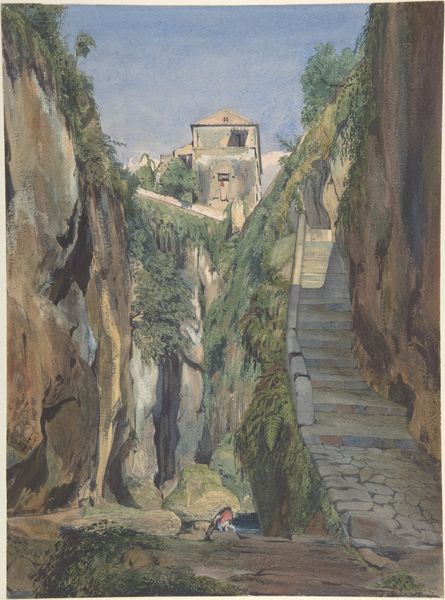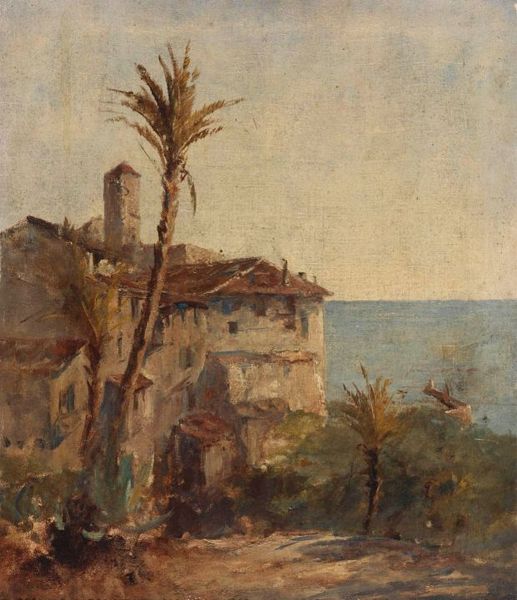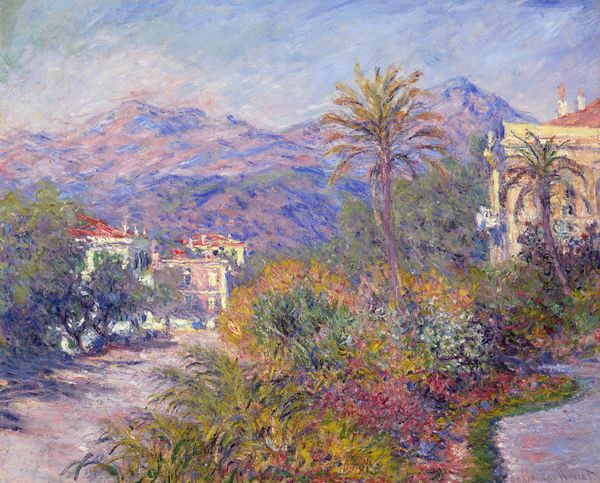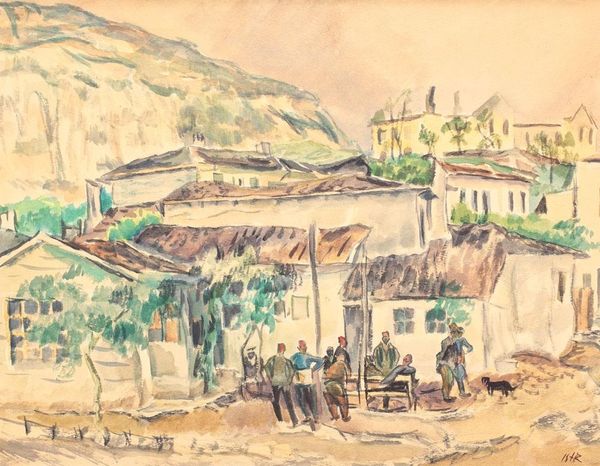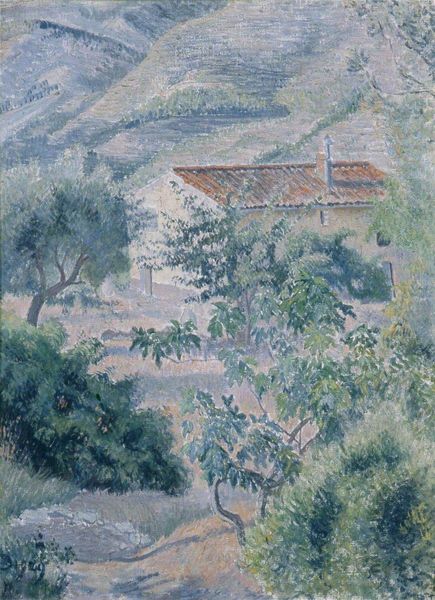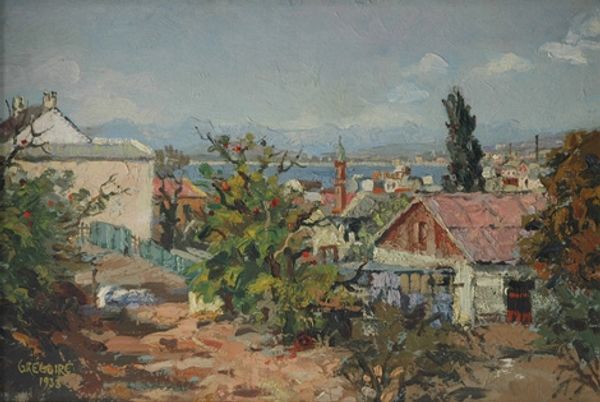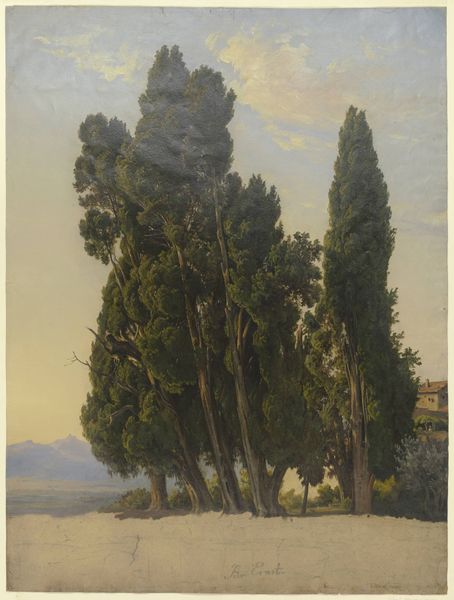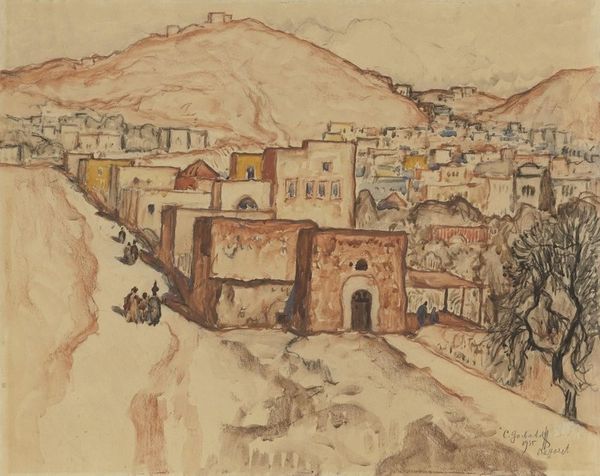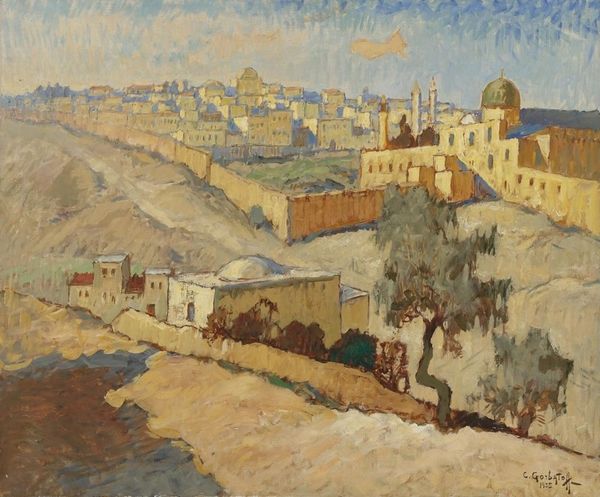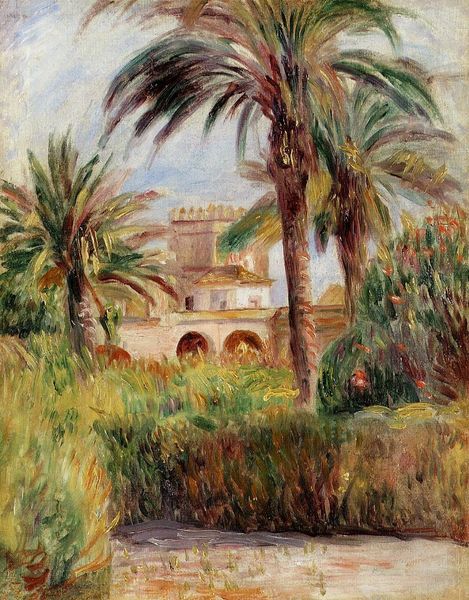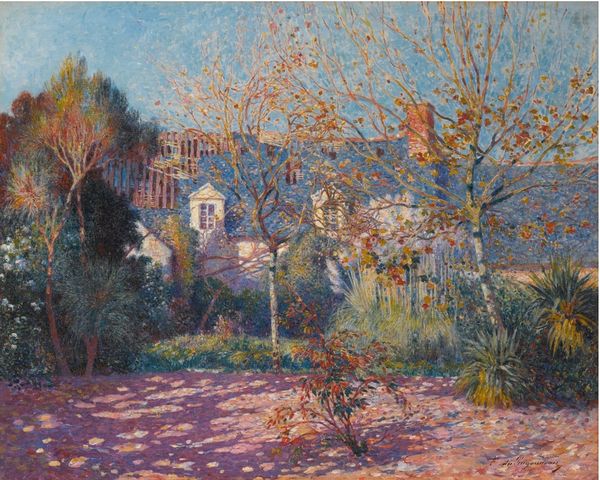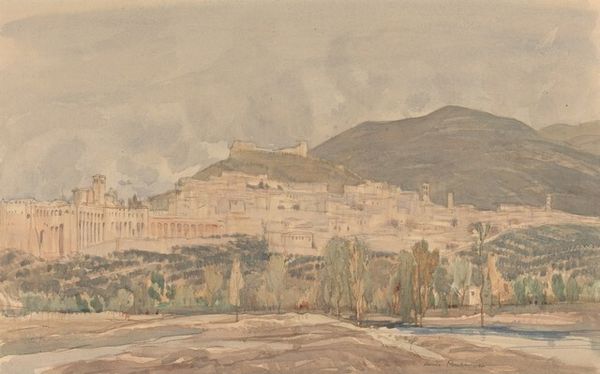
plein-air, watercolor
#
plein-air
#
landscape
#
oil painting
#
watercolor
#
coloured pencil
#
plant
#
cityscape
#
watercolour illustration
#
italian-renaissance
#
watercolor
Dimensions: 31.8 x 26.6 cm
Copyright: Public domain
Curator: Immediately, I am struck by the bright Mediterranean light and how the dome of the cathedral seems to nestle so perfectly into the hillside architecture. Editor: Indeed. What you're seeing is Rudolf von Alt’s "The Cathedral of Capri," created around 1835. It’s a watercolor, a wonderful example of his plein-air approach to landscape. Curator: The palm tree acts as a kind of repoussoir, framing the architecture behind. Von Alt's rendering captures a specific atmosphere and feeling rather than aiming for photographic realism. The choice of watercolor enhances that sense of fleeting, sun-drenched time. Editor: Absolutely. Alt was part of a broader artistic movement interested in capturing picturesque scenes like this. Capri, at the time, was becoming increasingly popular as a destination for artists and writers seeking a different, perhaps more "authentic," way of life, a retreat from industrialization. Curator: I notice how he uses colour sparingly but effectively. The muted ochre of the buildings, the various greens – they all seem perfectly calibrated. It seems that through the composition he’s inviting the viewer into this tranquil Italian landscape, yet I think there is something slightly constructed, a visual language he is intentionally implementing, despite working from life. Editor: Right. You could even consider how the image contributes to the ongoing romanticization of Southern Italy, transforming Capri into a sort of idyllic retreat from the industrialized north of Europe, something promoted and sought out in equal measure. Artists like Alt, unintentionally or not, played a significant role in constructing these narratives. This shaped tourist perceptions, travel patterns, and, ultimately, the local economy. Curator: Interesting, it goes to show how much meaning a seemingly simple landscape watercolour can hold. Editor: Precisely. When you think about it, every brushstroke and composition choice embodies its own complex histories and future interpretations.
Comments
No comments
Be the first to comment and join the conversation on the ultimate creative platform.
